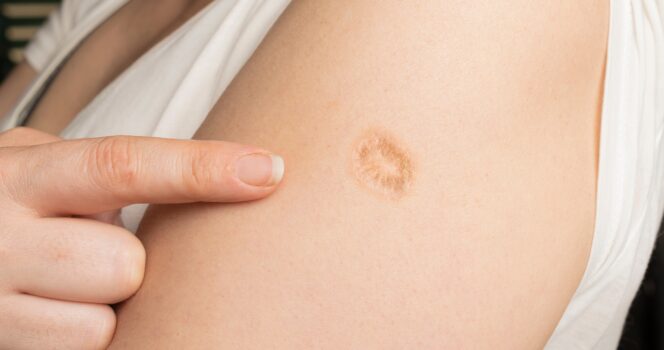I can’t quite recall why I was so captivated by it all those years ago, but I know it caught my attention in a way that seemed to linger. I eventually forgot about it, as life often has a way of making things fade into the background.
Of course, I didn’t forget that the thing was still there, where it always had been. What I did forget was why it had intrigued me so much in the first place. Maybe I’d asked my mother about it once and she’d explained, but if she did, the answer didn’t stick with me.
That is, until a few years ago when I was helping an elderly woman off a train one summer. As I assisted her, I happened to notice the exact same scar, in the same spot as my mother’s. Immediately, my curiosity was reignited. But with the train pulling away and my destination looming, there wasn’t much opportunity to ask her about the origin of her scar.
So, I called my mother instead. She casually mentioned that she’d told me about it before—several times, in fact. But as is often the case with information I deem unimportant, my brain had let it slip away. Her scar, she explained, was from the smallpox vaccine.
Smallpox once ravaged humanity, a highly infectious viral disease that caused fever and a painful skin rash. At its most devastating, it killed roughly 30% of its victims, according to the CDC, and left many others permanently disfigured.
Thanks to an extensive vaccination campaign, the smallpox virus was officially declared eradicated in the U.S. by 1952, with routine vaccinations ending in 1972. However, before that, every child received the smallpox vaccine, and the mark it left behind became a symbol of survival—a clear, visible reminder that someone had been vaccinated against the deadly disease.
And yes, that distinctive scar is what my mother—and so many others of her generation—bears.
So why did the smallpox vaccine leave such a noticeable mark? The vaccine itself was delivered in a unique manner compared to the standard shots we get today. Instead of a single needle, a two-pronged needle was used to make several punctures in the skin, delivering the vaccine directly into the dermis, the deeper layer of the skin.
The body’s response to the vaccine was a series of bumps that grew into small blisters. Over time, these blisters would burst, scab over, and heal, leaving behind the unmistakable scar that signified the recipient had been protected from one of the most dangerous diseases in history.
